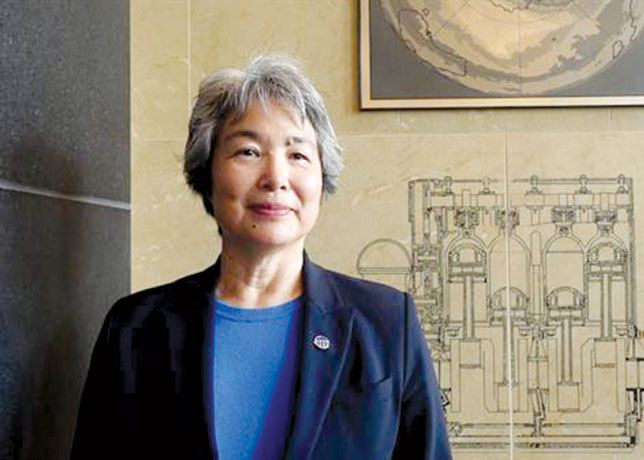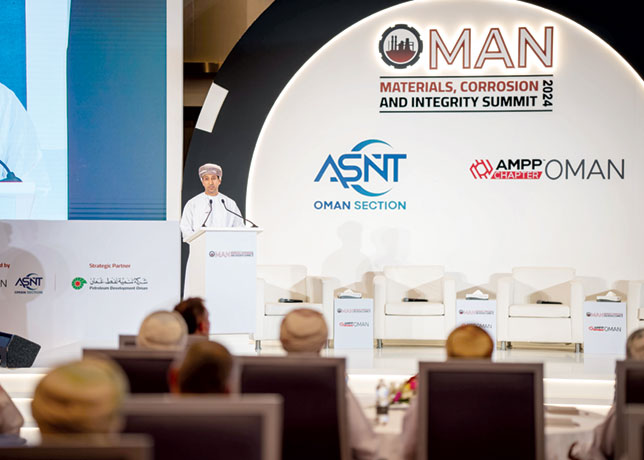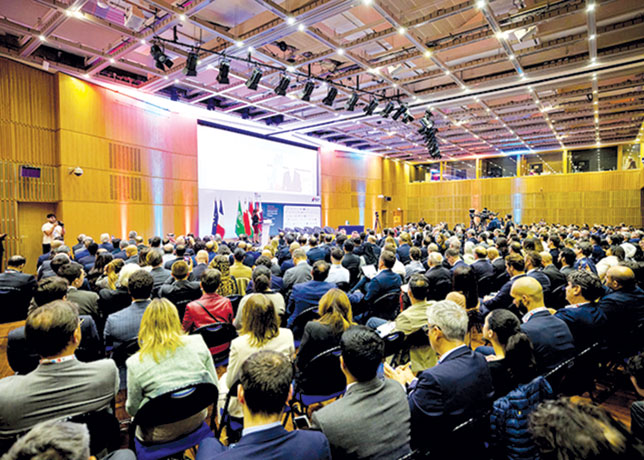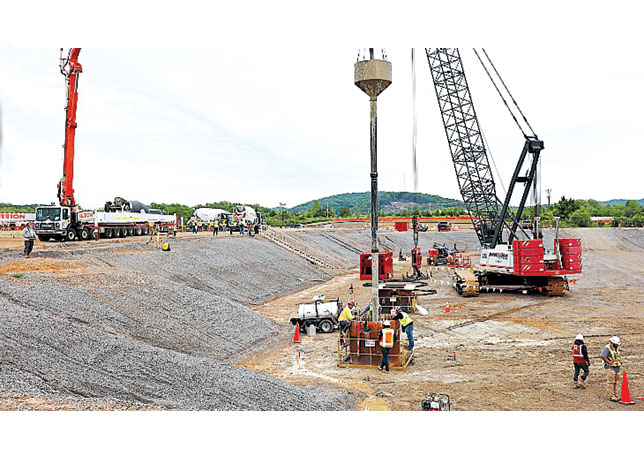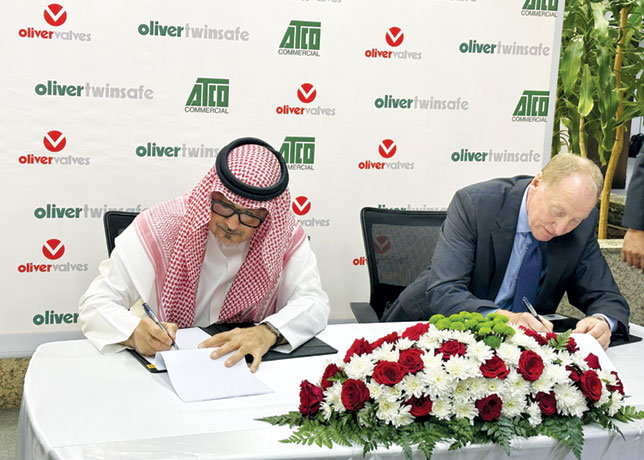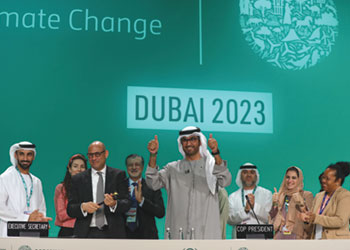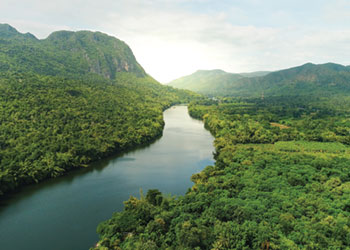
 Article 6 allows countries to trade carbon credits to achieve their climate goals
Article 6 allows countries to trade carbon credits to achieve their climate goals
The absence of a deal on Article 6 avoids replicating the errors of the voluntary carbon market and sending the wrong signal to companies and countries seeking to sidestep their climate responsibilities
Two weeks of intensive talks at COP28 in Dubai that followed months of detailed preparatory negotiations failed to clinch a deal on Article 6 carbon markets.
The lack of a breakthrough leaves the nascent UN carbon markets in a continued state of uncertainty and shakiness, but avoids the adoption of inadequate rules that would have chained down climate ambition, enabled questionable trading and facilitated greenwashing.
Article 6 of the Paris Agreement covers carbon markets and other "cooperative approaches" that countries can use to meet their climate targets.
‘Voluntary’ carbon markets – those that sit outside the UN climate regime – have long been viewed by some as a lawless ‘wild west’.
This year, in particular, voluntary carbon markets and forest carbon offsets have been under intense scrutiny, courtesy of several high-profile investigations examining whether they deliver on their stated carbon-saving goals and their impacts on biodiversity and local communities.
Some countries are opposed to the idea of carbon markets in principle, while offsetting is central to the climate policies of others.
As a result, Article 6 negotiations are often contentious, reaching a head in Madrid at COP25, where countries failed to agree on rules that could "make or break" the entire Paris Agreement.
A landmark agreement at COP26 in Glasgow in 2021 put in place the broad brushstroke principles that would govern two types of carbon markets: Article 6.2, which involves bilateral or multilateral emissions trading agreements between countries, and Article 6.4, which envisions the creation of a global carbon market overseen by a United Nations entity known simply as the Supervisory Body.
With the rules written, the International Emissions Trading Agency (IETA) hoped that countries would put "politicised" bickering behind and operationalise the new market and 6.2 mechanism at COP28.
In Dubai, however, countries failed to reach an agreement on Article 6.2 and Article 6.4. Both of those were subject to "rule 16", meaning talks will resume next year.
However, an agreement on Article 6.8 was reached and seen as a "victory" by some for ecosystem-based approaches that put local actors at their heart.
NGO Carbon Market Watch commented that, if the draft decisions at COP28 had passed, Article 6 would have "torpedo[ed]" the Paris Agreement. However, not passing the deal or developing robust safeguard tools was also worrying to many.
"The absence of a deal on Article 6 avoids replicating the errors of the voluntary carbon market and sending the wrong signal to companies and countries seeking to sidestep their climate responsibilities," said Gilles Dufrasne, Policy Lead on global carbon markets at Carbon Market Watch.
"Trading carbon credits requires strong environmental and human rights guardrails, as has been shown by the numerous scandals related to the voluntary carbon market that broke out over the past 12 months. The text on the table just didn’t provide this. It would have risked reproducing the mistakes of voluntary carbon markets, and by rejecting it, negotiators made the best out of a bad situation."
Although this outcome avoids the worst, it does not improve the situation, which is further worsened by all the numerous free-wheeling voluntary carbon market announcements that were made throughout the two weeks of the COP.
ARTICLE 6.2: COOPERATIVE APPROACHES
Among the contentious issues discussed in Dubai were the arrangements for countries to report on their existing and future trades under Article 6.2.
Article 6.2 discussions – which dealt with bilateral carbon-trading between countries – were deeply divisive at COP28, with countries disagreeing over whether – and how – to impose processes and controls on bilateral trading.
At COP28, some countries pushed to establish a clear process for "identifying, notifying and correcting inconsistencies" in data submitted by countries on the trades they make. Earlier draft texts at the summit included a lengthy section on this topic – but it was reduced to a single paragraph in the penultimate draft of the Article 6.2 text.
The same countries also wanted a more clearly defined sequence for the authorisation of carbon-cutting schemes and the subsequent issuing of carbon credits, as well as tightly limited rules on when the authorisation of carbon credits could be "revoked".
ARTICLE 6.4: THE NEW MECHANISM – CENTRALISED APPROACH
For Article 6.4, COP28 was meant to provide clarity on three important topics: authorisation of units, the interconnection between the 6.2 and 6.4 registries, and the eligibility of emissions avoidance and conservation enhancement.
Among the main points of contention, parties had to approve methodologies to define the "baselines" from which emission reductions or removals can be calculated to generate credits.
Ahead of COP28, the Article 6.4 supervisory body had developed a set of recommendations that garnered broad support at COP28. But negotiations ran aground on rules for carbon credits generated via "removals" – meaning engineered or natural processes that suck CO2 out of the atmosphere.
Many of these removal techniques – such as tree-planting – are non-permanent and risk gains being reversed from natural hazards, such as droughts and fires, as well as due to political instability, corruption and litigation.
"The rejection of the 6.4 text is bittersweet," said Isa Mulder, policy expert on global carbon markets at CMW. "While elements such as the methodological requirements were moving in the right direction, it fell short on delivering an ambitious carbon crediting mechanism, mainly regarding robust rules around carbon removals."
ARTICLE 6.8: NON-MARKET APPROACHES
Article 6.8 is the third part of Article 6 and covers cooperation via "non-market approaches". The idea has long been ill-defined, but has been pushed by countries that object to market-based mechanisms on principle.
Disagreement over the meaning of non-market approaches continued at COP28. Draft texts "invite[d] parties to consider non-market approaches, including domestic fiscal measures [such as carbon pricing]", proposed by the EU and opposed by many developing countries. Other blocs suggested non-market approaches that "enhanced the contribution of nature-based solutions in line with ecosystem-based approaches".
The final version of the Article 6.8 text that countries agreed on eschews specific examples of such approaches and simply "encourages parties to continue identifying opportunities" to use them.
The text asks the UNFCCC secretariat to complete a web-based platform before the next climate talks are held in Bonn next June and "encourages" countries to use it to submit information on non-market approaches.
The final version of the text, published on the evening of 13 December, eschews specific examples of NMAs and simply "encourages parties to continue identifying opportunities" to use them.
• This report has come about through inputs from reports by Carbon Market Watch and Carbon Brief.







